A Pilates teacher says muscle loss accelerates after 60—here are three ways to combat it now
Arm yourself with some Pilates exercises to battle sarcopenia
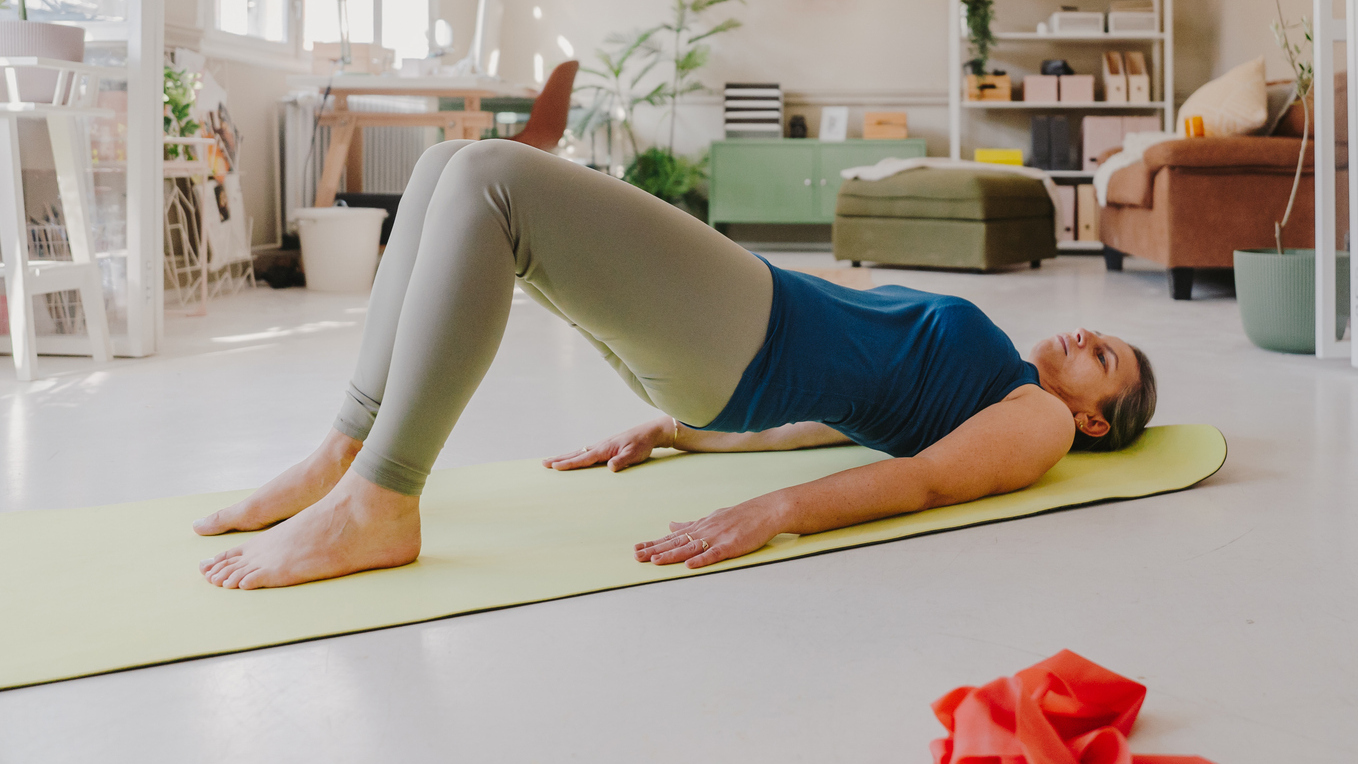
One of the more difficult parts of growing old is age-related muscle loss, called sarcopenia, which can diminish our functional independence.
“After the age of 30, adults lose 3-8% of muscle mass per decade,” says Club Pilates master trainer CarolAnn. “This accelerates after 60 if not addressed.
“Maintaining strength is vital because muscle supports bone density, metabolism, balance and joint integrity. More importantly, it enables independence: lifting a grandchild, carrying groceries, or simply getting up from the floor all require muscular strength”
Thankfully, there are things you can do to counteract muscle loss and build and strengthen your body and CarolAnn says Pilates is one of the best ways to do this.
“For adults over 60, Pilates offers an adaptable way to preserve muscle mass, reduce injury risk and maintain independence,” says CarolAnn. “Even modest increases in strength translate to meaningful functional gains for older adults.”
For large increases in muscle size—called hypertrophy—heavier resistance training is generally more effective, but for older adults, CarolAnn says that Pilates combined with supplemental resistance training (meaning two sessions a week of progressive strength work) and adequate protein intake is a powerful, well-rounded approach.
CarolAnn adds that Pilates also improves neuromuscular coordination, balance, and posture—benefits that traditional weightlifting may not address as directly.
Start your week with achievable workout ideas, health tips and wellbeing advice in your inbox.
I asked CarolAnn to narrow down her favorite Pilates exercises for the over-60s to just three. Here are her recommendations, along with regressions to help you find the right variation for your ability, as well as form tips to keep in mind when performing the exercises.
But first, what should you do if you have limited mobility?
Pilates for limited mobility
With thoughtful modifications, Pilates is inherently adaptable, says CarolAnn. Here are some ways you can make Pilates more accessible if you have limited mobility:
- Switch positions: standing or seated versions of the same movement can be used when lying down is not feasible. If you have trouble getting off of the floor, you may find these chair exercises for seniors more helpful than the below.
- Use supports: a wall, chair, bolster, small pillow, or Reformer springs can reduce the load on your muscles and improve safety.
- Reduce the range of motion: small lifts or partial repetitions still train the neuromuscular pattern and build strength. Always work within a pain-free range, prioritizing quality of movement over the number of reps.
Our Pilates expert says that those with very limited mobility—for instance those recovering from a recent surgery, those with unstable cardiovascular status, or those with severe balance impairment—should receive supervised training with a physical therapist or Pilates instructor experienced in medical or adaptive programming.
Three Pilates exercises for the over-60s
1. Bridge
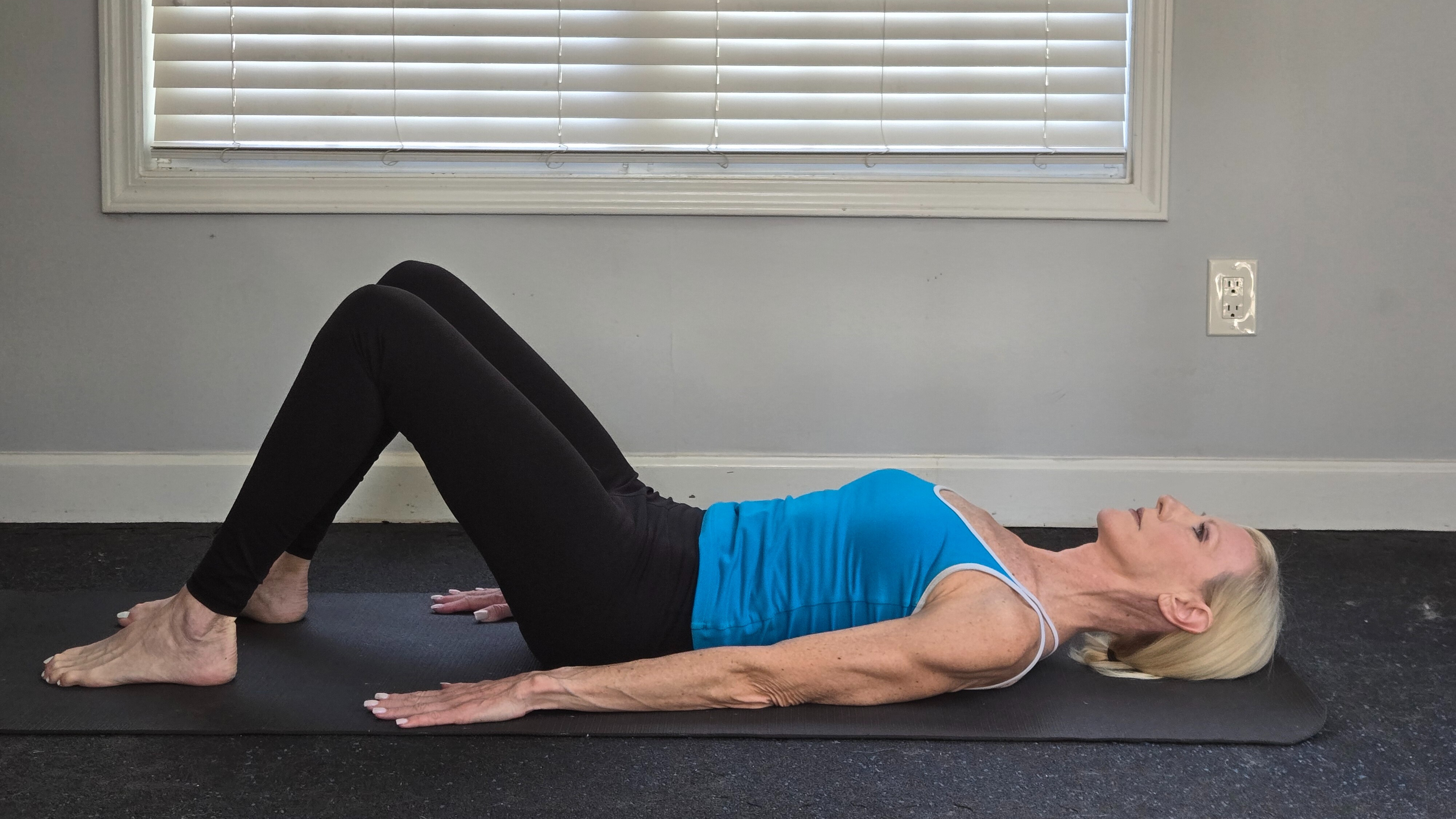
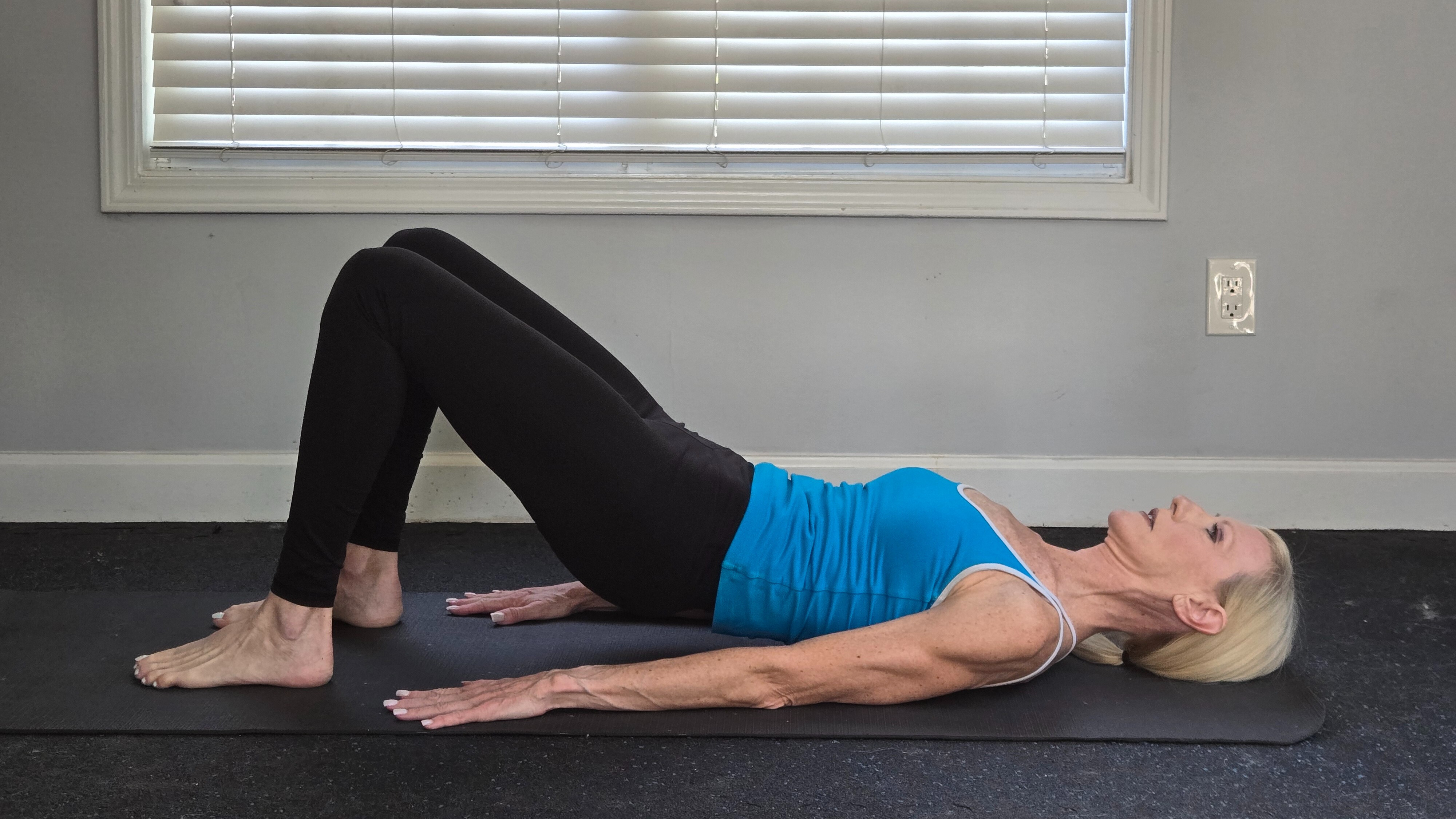
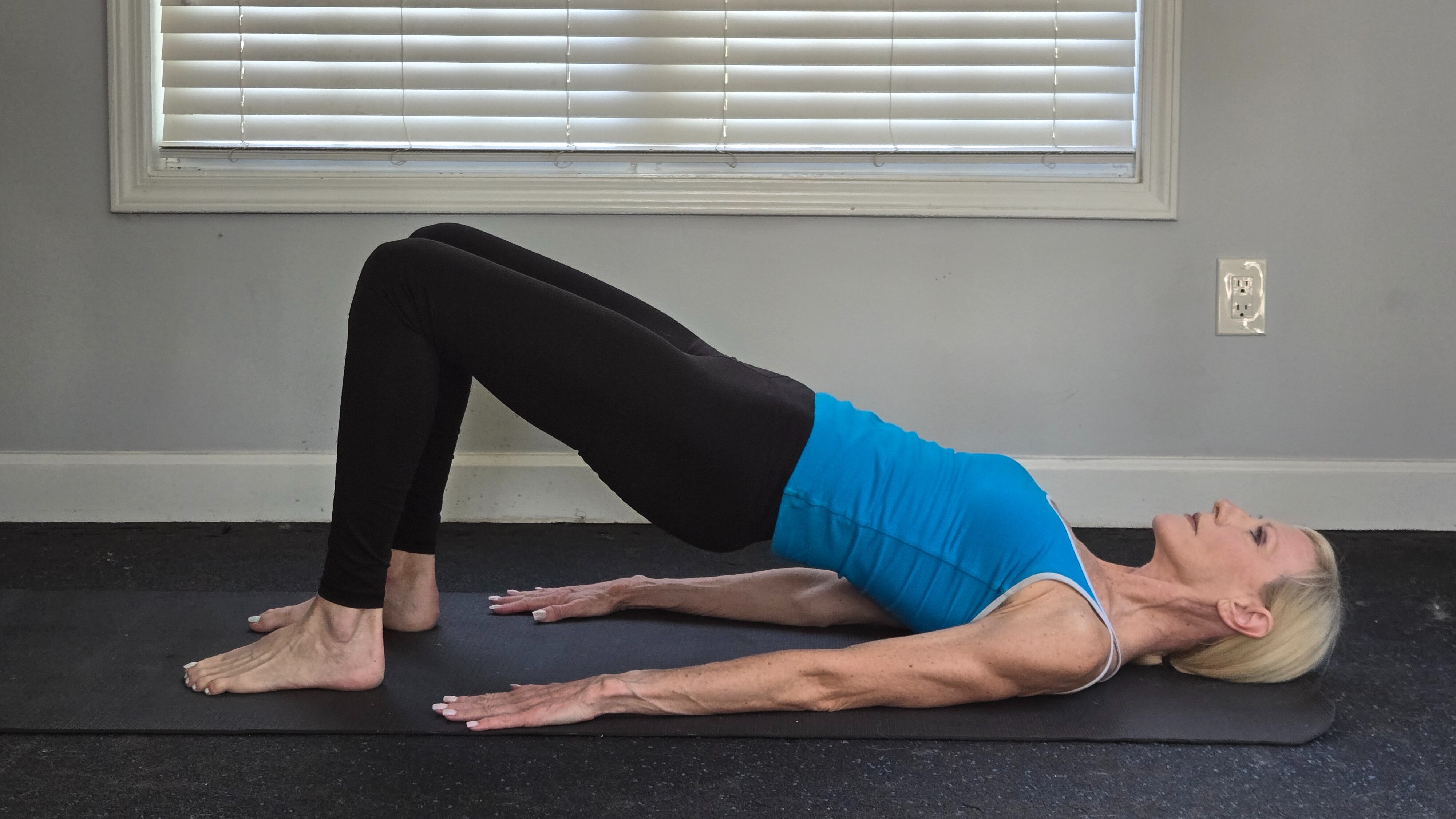
Sets: 1-2 Reps: 6-10
CarolAnn recommends you do this exercise two or three times per week and increase reps, hold time, or add a march at the top as your strength and tolerance improve. Add a mini Pilates ball (like this one from Amazon) between your thighs for added resistance.
How to do it:
- Lie on your back with your knees bent, feet hip-width apart and flat on the floor. Rest your arms by your sides and bring your heels close to your fingertips.
- Inhale to prepare, then exhale as you gently draw your navel toward your spine and tuck your tailbone under your spine.
- Inhale to prepare, then exhale as you lift your spine off the mat one vertebra at a time, starting from the bottom, until you reach a neutral pelvis and a straight line from your shoulders to knees.
- Squeeze your glutes and hold at the top as you inhale.
- Exhale as you reverse the movement until your pelvis is resting back on the mat.
Form tips:
- Keep your weight over your heels.
- Avoid arching your lower back at the top of the movement.
- Keep your neck relaxed.
Make it easier:
- Mini-bridge: lift your pelvis only a few inches off the mat and focus on doing the glute squeeze.
- Supported bridge: place a pillow or bolster at the base of your spine and perform pelvic tilts or small lifts from the bolster.
- Seated glute squeeze: for those who cannot lie down, perform seated glute contractions and small hip presses against a chair.
Make it harder:
- Single-leg bridge: When you can perform the full bridge easily and with no pain, lift one foot off the floor before raising your hips.
Why it’s great for the over-60s: “This exercise targets the glutes, hamstrings and spinal extensors, and teaches pelvic articulation and hip extension, which are movement patterns we need for standing up from a chair, climbing stairs, and walking with power and stability,” says CarolAnn.
“Strengthening the posterior chain also helps relieve lower-back stress and can improve posture.”
2. Swimming
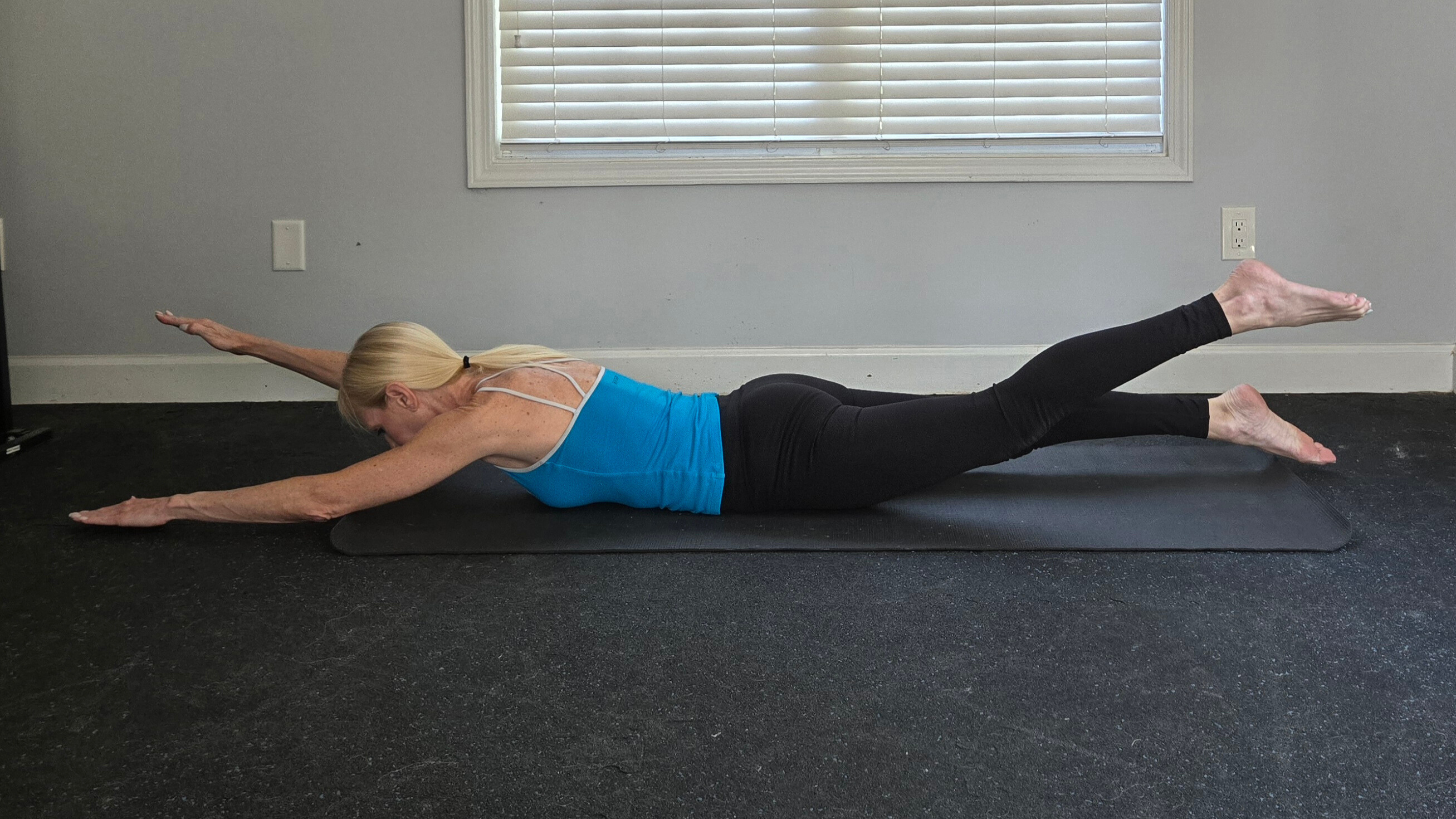
Sets: 1-2 Reps: 4-10 each side
How to do it:
- Lie on your front with your forehead resting on a cushion or your hands, so your neck is in a neutral position.
- Lightly engage your abdominals and pelvic floor—you want to lengthen through the spine, rather than crunching everything together.
- Lift your arms and legs just off the floor.
- Lift your right arm and left leg a few inches.
- Lower your right arm and left leg to just above the floor as you lift your left arm and right leg a few inches.
- Continue, keeping the movement small and controlled, and breathe steadily, inhaling for four counts and exhaling for four counts.
Form tips:
- Avoid hyperextending your neck or looking forward—keep your eyes down.
- Lift your legs using your glutes, not by arching your spine.
- Move rhythmically—avoid large, jerky lifts.
Make it easier:
- Legs only: Keep your arms on the floor and just perform the leg lifts.
- Arms only: Keep your legs on the floor and just perform the arm lifts.
- Bird dog: Get on your hands and knees and extend your right arm forward and your left leg behind you. Return to the start, then repeat on the other side. A great option for those who can’t lie prone.
- Use a prop: Place a small pillow under your hips.
Why it’s great for the over-60s: “This exercise strengthens the posterior chain (erector spinae, glutes, hamstrings) and shoulder stabilizer muscles,” says CarolAnn. “It combats rounded shoulders, improves posture, and builds coordinated strength in the back and shoulders, which are essential for an upright posture, good balance and reducing fall risk.”
3. Pilates push-up
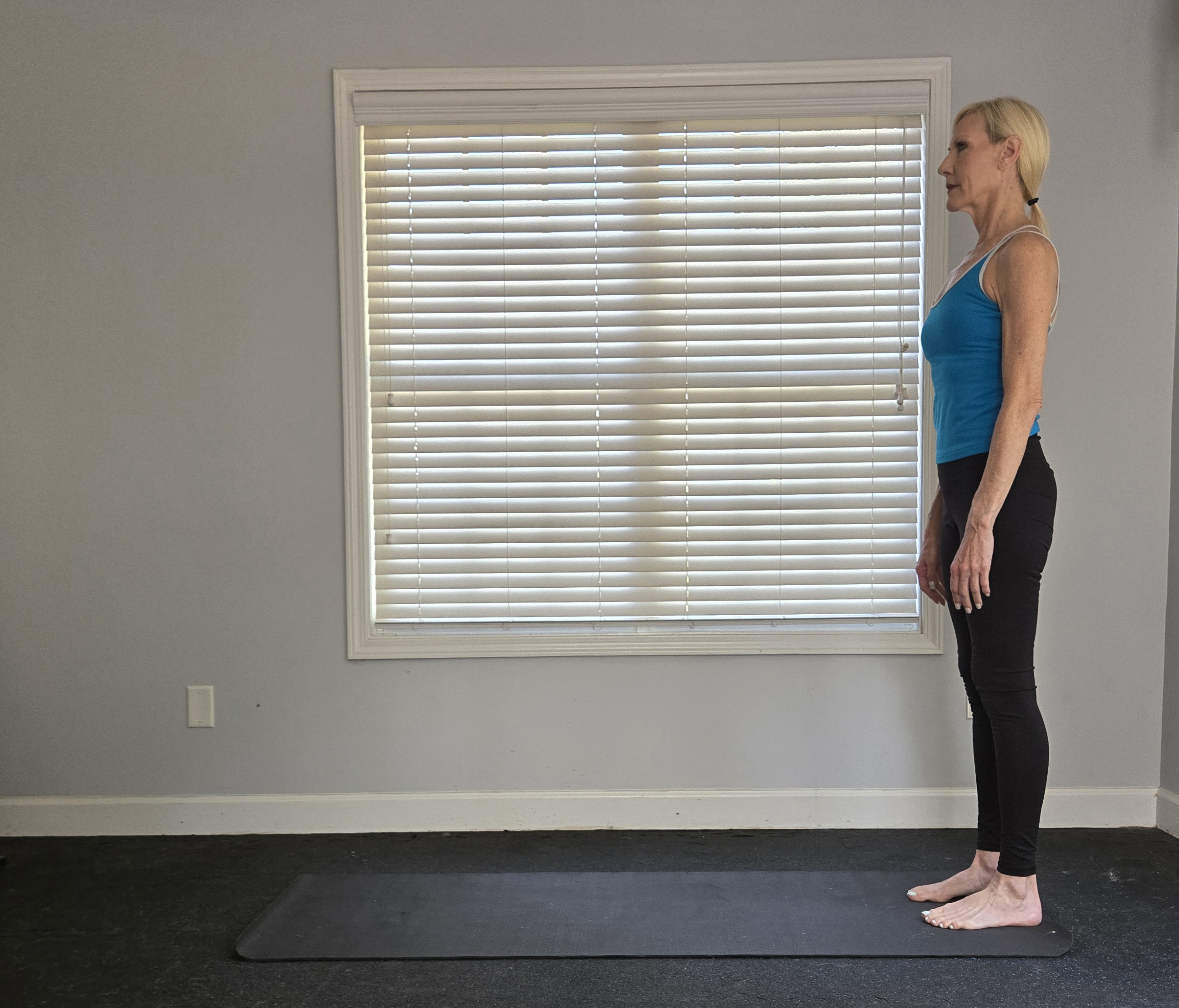
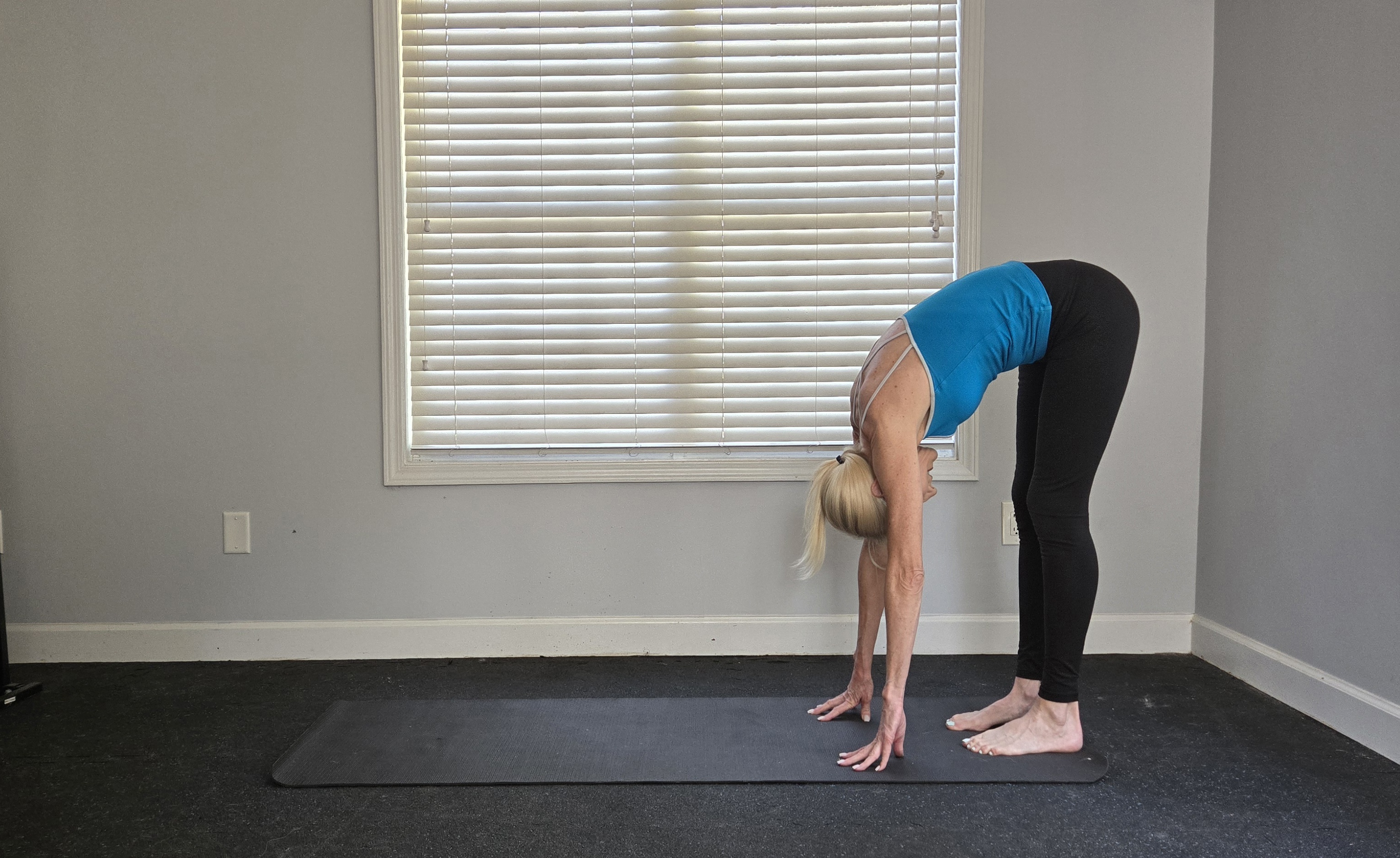
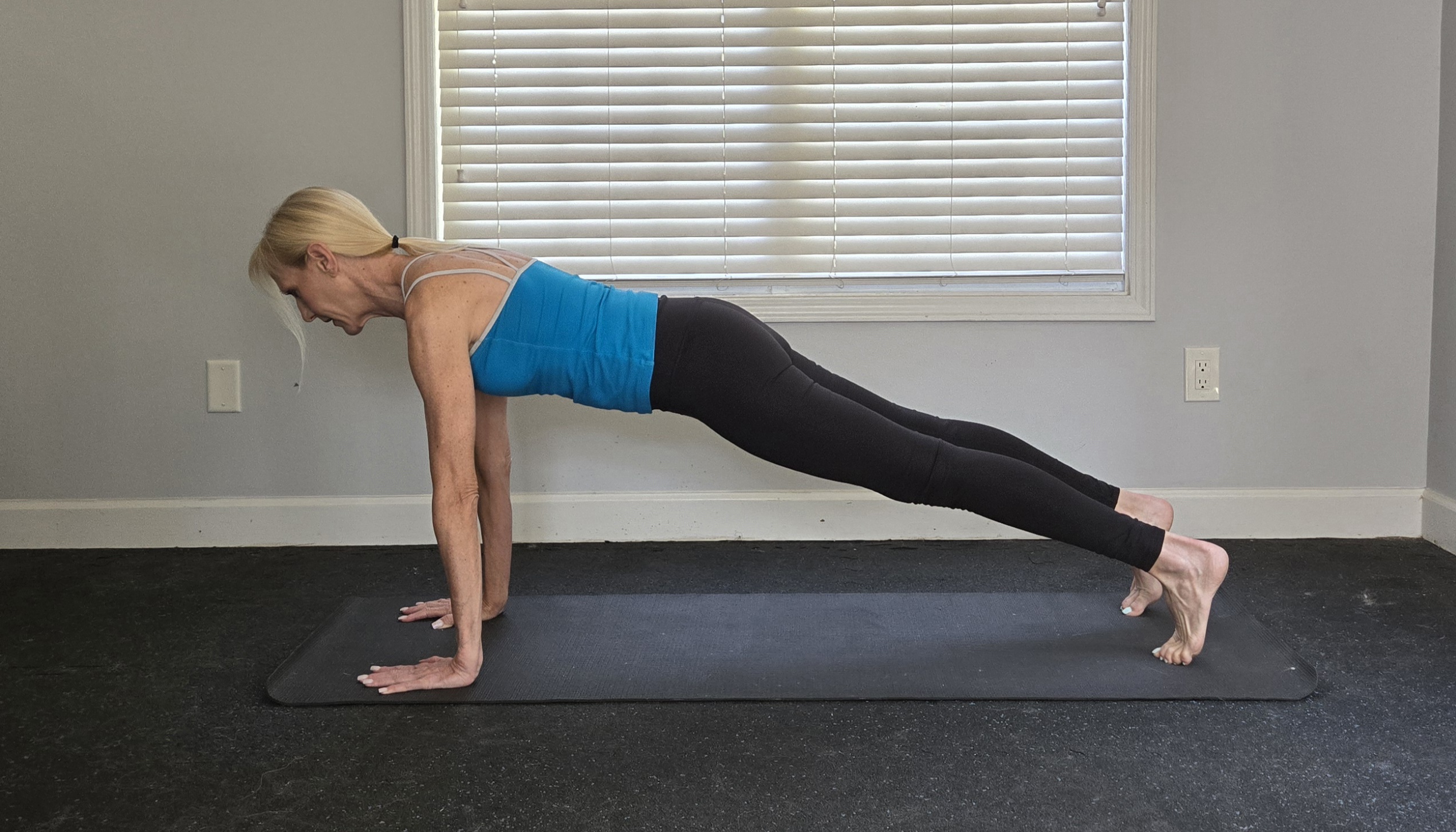
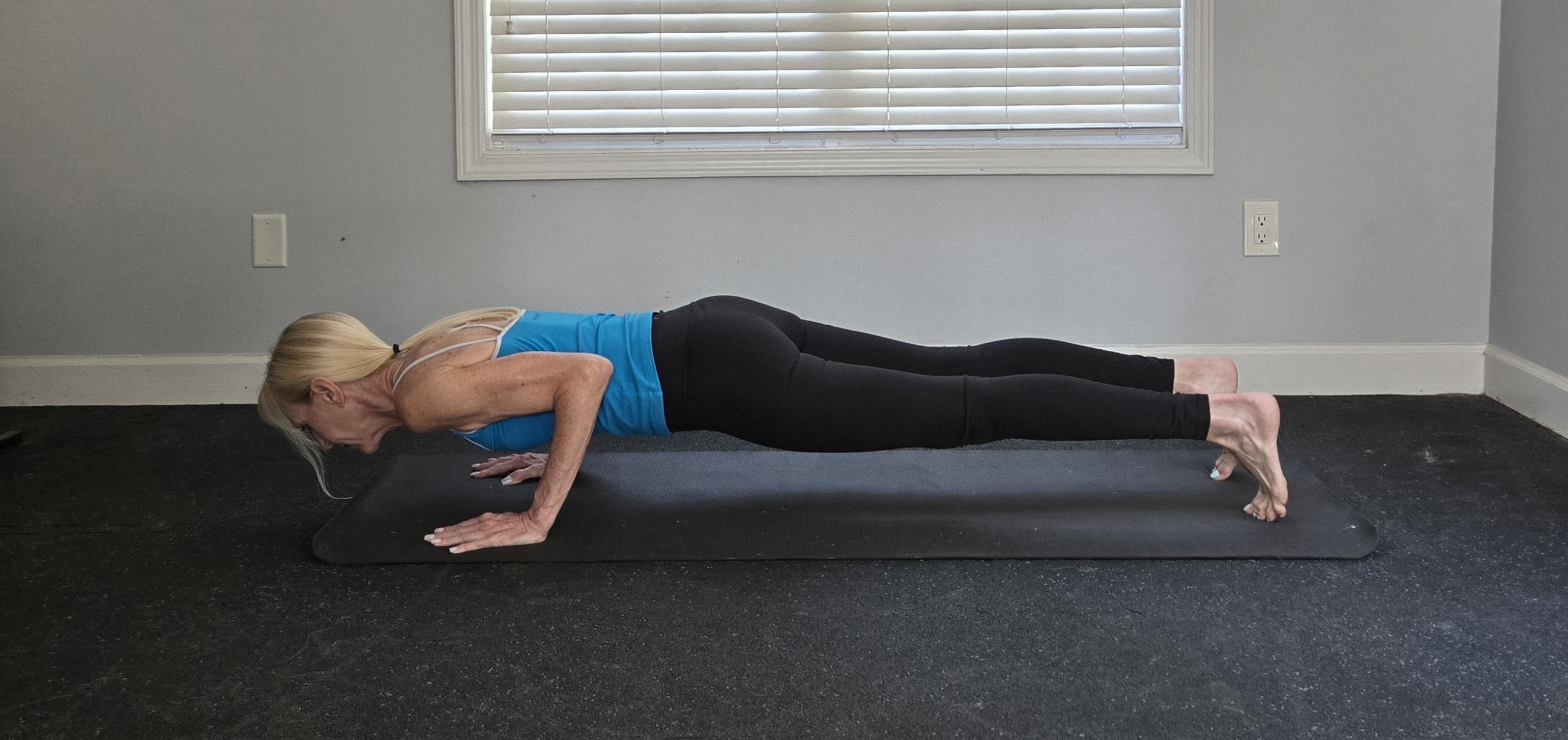



Sets: 1-3 Reps: 3-5
How to do it:
- Stand with your feet hip-width apart, lower your chin to your chest and fold forward (bending your knees if needed) to place your hands on the floor.
- Walk your hands forward until your body is in a straight line from head to heels, with your hands under your shoulders.
- Inhale as you bend your elbows to lower your chest to the floor with control.
- Exhale as you extend your arms to press up.
- Walk your hands back towards the feet and roll back up to standing.
Form tips:
- Avoid sagging at the hips or raising your shoulders.
- Keep your elbows at a 45° angle from your torso (when seen from above) for comfort and shoulder safety.
- Don't hold your breath.
Make it easier:
- Seated chest press with a resistance band: Wrap the band behind your upper back and press your hands forward.
- Push-up against a wall: Place your hands at shoulder height. Step further away as you get stronger to increase the difficulty.
- Incline push-up: To progress from a wall push-up, place your hands on a stable surface closer to the floor, like a countertop or bench.
- Push-up on knees: The final step towards the full move above, lower onto your knees from your toes before you perform the push-up.
Why it’s great for the over-60s: “This exercise builds upper-body strength and core stability, which is critical for functional pushing tasks like opening doors, pushing a shopping cart,” says CarolAnn. “It also provides postural support, reducing shoulder dysfunction when done with good mechanics.”

Lou Mudge is a Health Writer at Future Plc, working across Fit&Well and Coach. She previously worked for Live Science, and regularly writes for Space.com and Pet's Radar. Based in Bath, UK, she has a passion for food, nutrition and health and is eager to demystify diet culture in order to make health and fitness accessible to everybody.
Multiple diagnoses in her early twenties sparked an interest in the gut-brain axis and the impact that diet and exercise can have on both physical and mental health. She was put on the FODMAP elimination diet during this time and learned to adapt recipes to fit these parameters, while retaining core flavors and textures, and now enjoys cooking for gut health.
You must confirm your public display name before commenting
Please logout and then login again, you will then be prompted to enter your display name.
